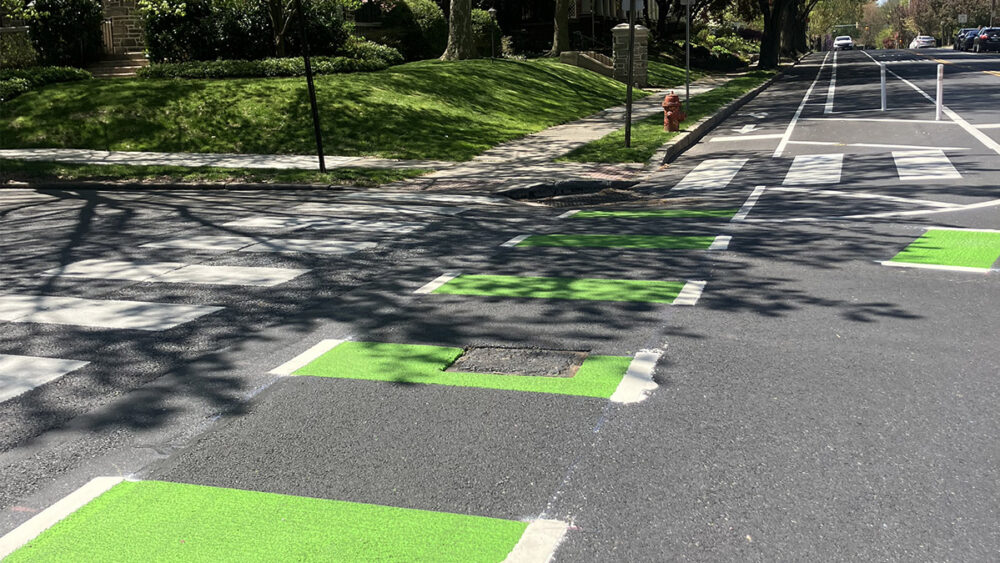The introduction of green markings and bike boxes on Lemon Street this month marks significant progress towards a safer, more cyclist-friendly city, prioritizing accessibility and sustainability for all residents and visitors whether they choose to walk, bike or drive.
Green Markings: Enhancing Visibility and Reducing Conflicts
Green markings strategically placed at potential points of conflict alert motorists and pedestrians to be mindful of cyclists, reducing crashes and promoting shared road responsibility. They help deter illegal parking, increase cyclist comfort, and improve motorist yielding behavior, contributing to safer traffic flow for everyone using the travel lanes.
 Bike Boxes: Prioritizing Cyclist Safety at Intersections
Bike Boxes: Prioritizing Cyclist Safety at Intersections
Two types of bike boxes, traditional and two-stage turn boxes, provide cyclists with increased visibility and priority, particularly during left turns.
Traditional bike boxes serve as marked zones positioned at the forefront of a traffic lane within a signal-controlled intersection. It offers cyclists secure and visible means to advance ahead of congested traffic when the signal is red.
Two-Stage Turn Boxes offer bicyclists a safe way to make left turns at signalized intersections from a bike lane.
Alignment with Best Practices
Inspired by successful implementations in cities like Austin, Boston, Portland, and San Francisco, these initiatives along Lemon Street align with national standards, improving road safety and urban livability.
Vision Zero
The City’s Vision Zero initiative outlines a variety of strategies to improve safety and eliminate the incidence of traffic-related fatalities. Safety tends to improve with lower speeds, so traffic calming is a central component of this initiative. The narrower a street is, the slower cars are likely to travel on it – many studies have demonstrated the correlation between narrower lanes and slower speeds. Painted bicycle lanes have also been shown to have a traffic calming effect.



